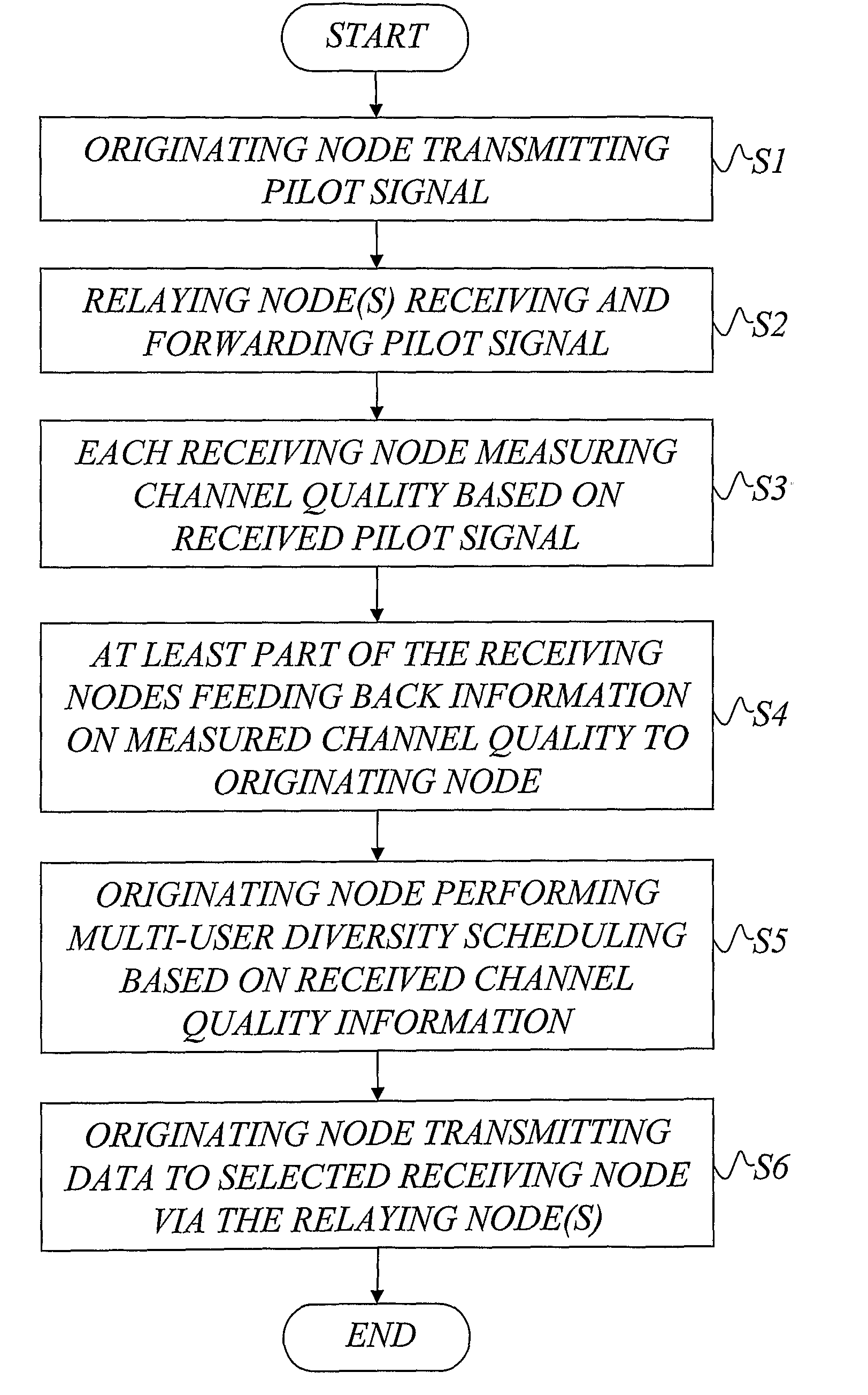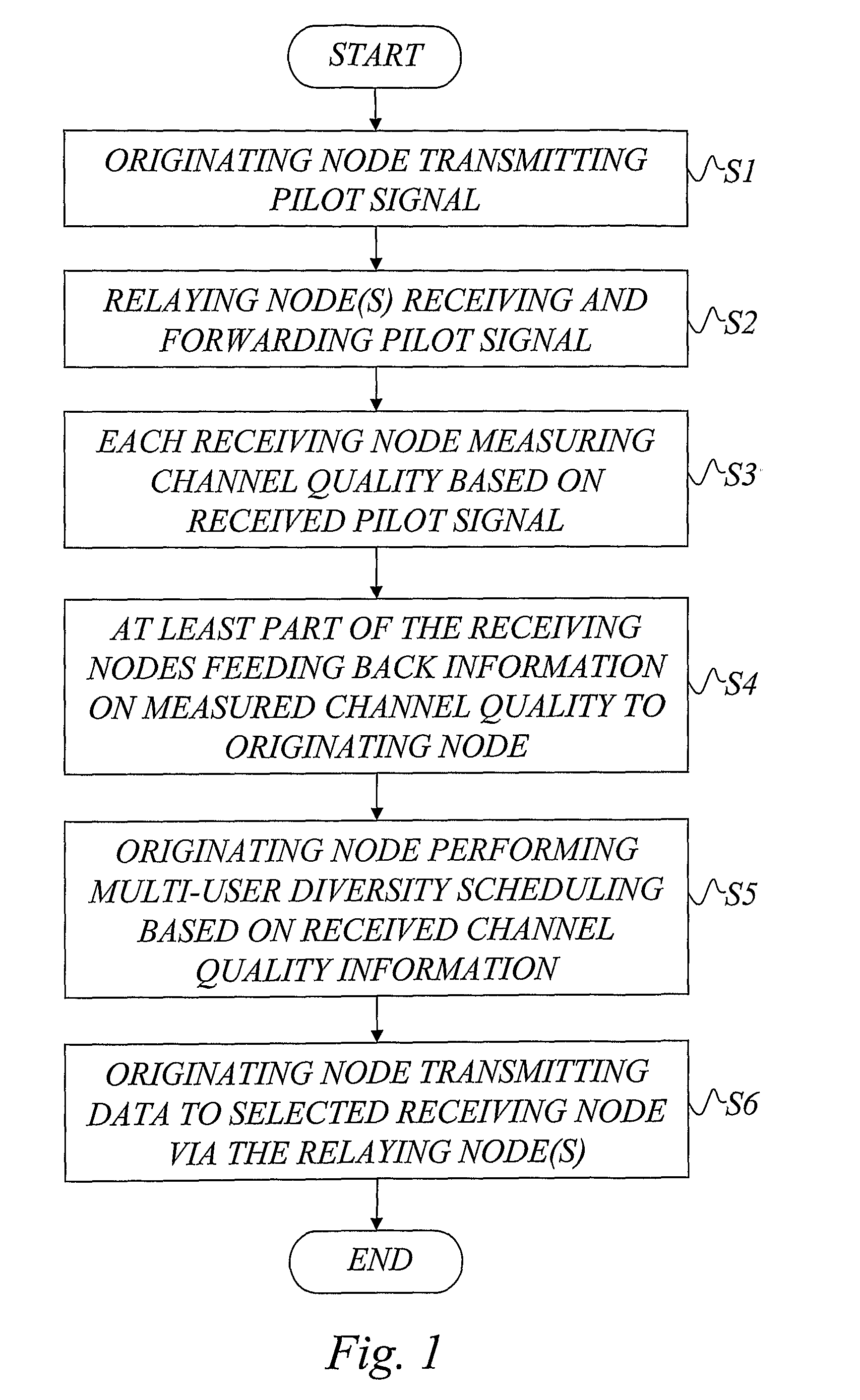Scheduling in a Wireless Multi-Hop Relay Network
a wireless multi-hop relay and wireless technology, applied in power management, signalling characterisation, channel coding adaptation, etc., can solve the problems of increasing the cost of building and maintaining the system, requiring fast protocols, and imposing additional overhead, so as to increase the average data rate, reduce variance, and improve the effect of data ra
- Summary
- Abstract
- Description
- Claims
- Application Information
AI Technical Summary
Benefits of technology
Problems solved by technology
Method used
Image
Examples
performance example
[0073]In the following example, it is assumed that V=6 relays (RS1-RS6) are placed in a hexagon around an originating transmitter such as a base station (BS), and that U receivers such as mobile stations (MS1-MSU) are positioned a distance away from the transmitter that is roughly twice the transmitter-relay distance. The basic configuration is shown in FIG. 5.
[0074]First, amplify and forwarding will be assumed. Starting from the signal to noise ratio in a receiver as presented in [6], this relation is modified for opportunistic cooperative relaying by incorporating a random phase factor exp(iφv,u) for each relay (RS) v and each receiver (MS) u. The effective SNR for a receiver (mobile station) u is then expressed as:
ΓEff,u=∑n=1Nb_v(AF)ΓRS,v·ΓMS,u,vΓRS,v+ΓMSu,k+1·jϕu,v2∑n=1Nb_v(AF)2(3a)
[0075]Note that the arguments in the square root of (3a) are instantaneous values, reflecting current and instantaneous channel conditions, in contrast to the average values used for bv.
[0076]In the d...
PUM
 Login to View More
Login to View More Abstract
Description
Claims
Application Information
 Login to View More
Login to View More - R&D
- Intellectual Property
- Life Sciences
- Materials
- Tech Scout
- Unparalleled Data Quality
- Higher Quality Content
- 60% Fewer Hallucinations
Browse by: Latest US Patents, China's latest patents, Technical Efficacy Thesaurus, Application Domain, Technology Topic, Popular Technical Reports.
© 2025 PatSnap. All rights reserved.Legal|Privacy policy|Modern Slavery Act Transparency Statement|Sitemap|About US| Contact US: help@patsnap.com



